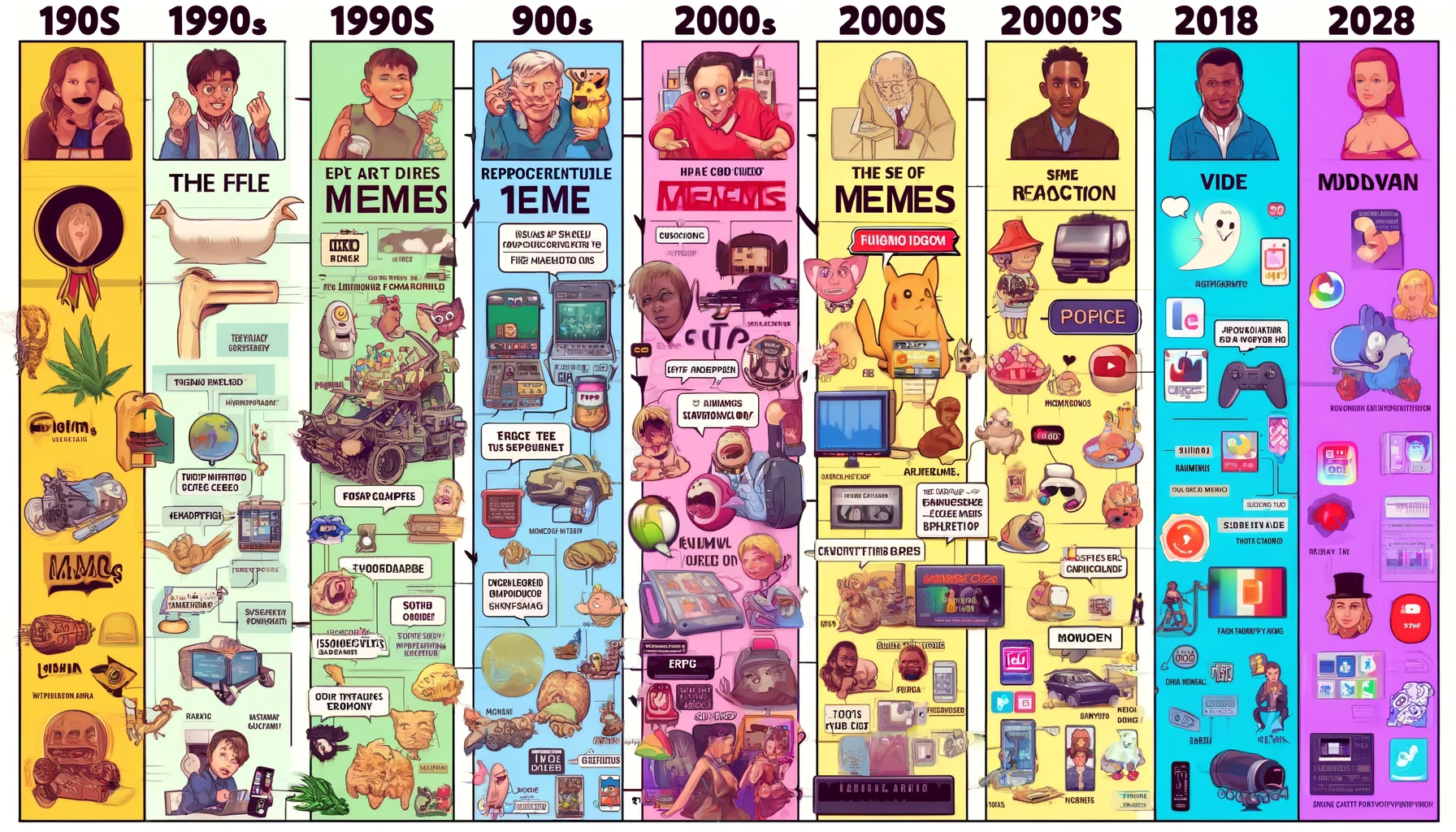The Evolution of Meme Formats

Memes have become a ubiquitous part of internet culture, serving as a unique form of communication that blends humor, social commentary, and viral content. Since their inception, meme formats have undergone significant evolution, adapting to changes in technology, social media platforms, and cultural trends. This article explores the transformation of meme formats from their early days to the complex and diverse forms we see today.
Early Text and Image Memes
In the early days of the internet, memes were primarily text-based and simple in design. These early memes often featured plain text with humorous or ironic statements that resonated with niche online communities. The advent of image-sharing capabilities soon led to the combination of text and images, giving birth to the classic meme format we recognize today.
One of the most iconic early image memes is the "Impact font" meme, which typically features a top and bottom text overlay on an image, using the bold and easily readable Impact font. Examples include "Advice Animals" such as "Advice Dog," "Courage Wolf," and "Socially Awkward Penguin." These memes were straightforward and quickly became popular due to their relatable and humorous content.
The Rise of Multi-Panel and Reaction Image Memes
As social media platforms like Facebook and Reddit gained popularity in the mid-2000s, meme formats began to diversify. Multi-panel memes, which use a series of images to tell a short story or convey a progression of events, emerged as a new way to deliver humor and commentary. These memes allowed for more complex storytelling and nuanced jokes.
Reaction images also became a staple of internet culture during this period. These memes use a single image to represent a specific emotion or reaction, often with a caption to provide context. The "Forever Alone" face and "Y U NO" guy are classic examples of reaction image memes that captured specific feelings and situations, making them highly relatable and widely shared.
Video and GIF Memes in the Age of Social Media
The 2010s brought significant changes to meme culture with the rise of video-sharing platforms like YouTube and the introduction of short-form video apps such as Vine and TikTok. These platforms enabled the creation and dissemination of video memes, which added a new dimension to meme formats.
GIFs (Graphics Interchange Format), which are short, looping video clips, became particularly popular for their ability to convey emotions and reactions succinctly. Websites like Giphy and Tenor made it easy to create and share GIFs, further integrating them into online communication. Popular GIF memes include reaction GIFs, such as "Kermit the Frog drinking tea" or "Michael Jackson eating popcorn," which are used to express various emotions or responses in online conversations.
The Impact of Apps like TikTok on Meme Formats
TikTok, launched in 2016, revolutionized meme culture by providing a platform specifically designed for creating and sharing short-form video content. TikTok memes often involve trends where users recreate specific video formats, dances, or challenges, leading to viral phenomena that can spread rapidly across the platform.
One notable example is the "Renegade" dance, which became a viral TikTok trend and was replicated by millions of users worldwide. The app's algorithm, which promotes content based on user engagement, has played a significant role in the rapid proliferation of video memes, making TikTok a central hub for meme creation and consumption.
Memes in the Era of Deepfakes and AI
As technology continues to advance, new tools and techniques are emerging that further expand the possibilities for meme creation. Deepfake technology, which uses artificial intelligence to create realistic but fake videos, has begun to influence meme formats. These tools allow creators to superimpose faces or voices onto existing videos, creating humorous or satirical content that blurs the line between reality and fiction.
While deepfake memes can be entertaining, they also raise ethical concerns about misinformation and the potential for misuse. As with any new technology, the implications of deepfakes in meme culture will need to be carefully considered.
The evolution of meme formats reflects the dynamic nature of internet culture and the ongoing interplay between technology, creativity, and social interaction. From simple text-based jokes to sophisticated video and AI-generated content, memes have continuously adapted to the changing digital landscape. As we look to the future, it is clear that memes will remain a powerful and influential form of communication, constantly evolving in response to new technologies and cultural trends.